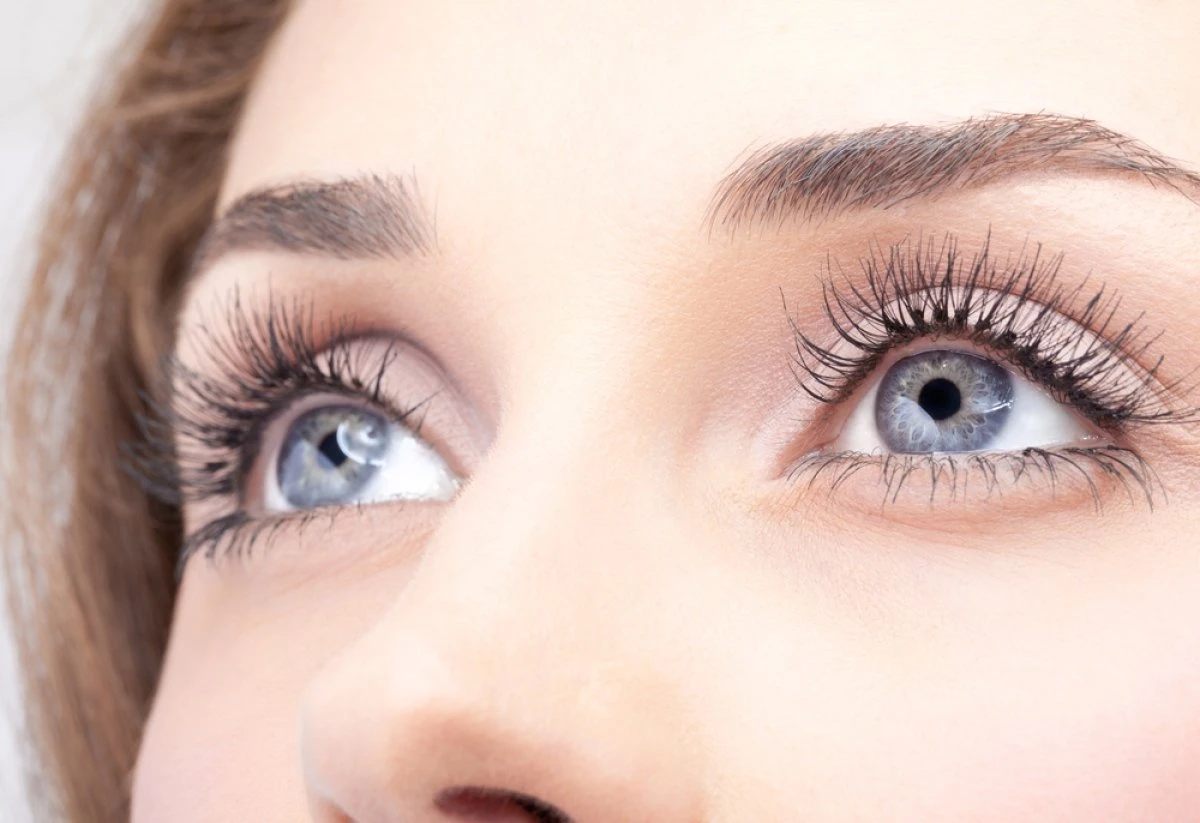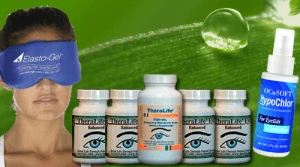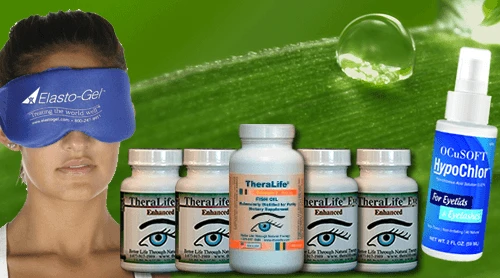Reducing eyelid swelling can be a concern for many, and while natural remedies like cold compresses, cucumber slices, chamomile tea bags, aloe vera gel, and witch hazel offer some relief, it’s crucial to consider products that provide targeted benefits. TheraLife’s range of products is designed to address various eye health concerns such as blepharitis, dry eyes, and eyelid issues. Their formulations are crafted to enhance overall eye health and comfort, offering effective solutions rooted in scientific research.
TheraLife’s products benefit customers by providing relief from conditions like blepharitis and dry eyes through natural and clinically-backed ingredients. For instance, their solutions for blepharitis help manage inflammation and irritation, supporting eye health without harsh chemicals. They also offer guidance on living with dry eyes, suggesting optimal environments and lifestyle adjustments to alleviate symptoms.
Moreover, TheraLife emphasizes the importance of maintaining eye hygiene and offers insights into safe makeup practices for those with blepharitis, ensuring that customers can enjoy their routine without exacerbating their conditions. By providing comprehensive care strategies, including dietary recommendations and product use, TheraLife empowers customers to manage their symptoms effectively.
Customers are encouraged to explore TheraLife’s detailed guides and product offerings to find tailored solutions that fit their unique needs, ensuring both safety and effectiveness. As always, consulting healthcare professionals for personalized advice is recommended.
Best Eyelids Swell and Itch Treatment From TheraLife- When Drops Don’t Work.
Key Takeaways
- Apply cold compresses to closed eyelids to help reduce swelling and provide temporary soothing relief.
- Practice good eyelid hygiene by gently cleansing eyelids with warm water and mild, non-irritating cleansers.
- Rest with your head elevated to minimize fluid accumulation and promote faster reduction of swelling.
- Avoid rubbing or touching the eyes to prevent irritation and worsening of inflammation.
- Consult an eye care professional for persistent swelling to ensure proper diagnosis and evidence-based treatment.
Apply Cold Compresses
Despite common recommendations, clinical studies don’t support the use of cold compresses for reducing eyelid swelling. You might hear that applying cold therapy can provide swelling reduction, but current evidence doesn’t validate its effectiveness for eyelid-specific edema.
Randomized controlled trials and systematic reviews have found insufficient data supporting cold compresses as a reliable intervention for periorbital swelling. The underlying mechanisms of eyelid swelling, often related to inflammatory or allergic processes, don’t consistently respond to local cold therapy.
While cold compresses may provide subjective relief by causing vasoconstriction and temporary numbness, these effects don’t translate to clinically significant swelling reduction. For evidence-based care, consult with an ophthalmologist before relying on cold therapy for eyelid conditions. Persistent eye pain may indicate underlying ocular surface damage, which requires professional evaluation and treatment.
Stick with interventions that demonstrate proven efficacy.
Use Cucumber Slices
Many popular home remedies suggest placing cucumber slices on swollen eyelids, claiming their cool temperature and antioxidant content can reduce puffiness. You might consider using cucumber slices because the cooling effects help constrict blood vessels and reduce localized inflammation. The high water content of cucumbers can provide instant surface hydration. However, there’s limited scientific evidence to fully support cucumber benefits for eyelid swelling, especially when compared to standard cold compresses. Still, cucumbers remain safe if applied externally and may offer subjective relief. Cucumbers contain antioxidants like cucurbitacins and vitamin C. The cooling effects induce vasoconstriction, minimizing edema. Place clean, chilled slices over closed eyelids for up to 10 minutes. There’s no risk of allergic reaction for most individuals. Use as an adjunct, not a replacement for medical advice or prescribed therapy. For those managing chronic dry eyes, regular eyelid hygiene is crucial to minimize symptom recurrence.
Try Chamomile Tea Bags
Although chamomile tea bags are frequently recommended to alleviate eyelid swelling due to their purported anti-inflammatory properties, current scientific research doesn’t support their efficacy for this purpose.
When you explore chamomile benefits, it’s important to distinguish anecdotal claims from evidence-based interventions. While chamomile contains compounds like apigenin and bisabolol that demonstrate anti-inflammatory activities in laboratory environments, clinical trials specifically addressing eyelid edema or periorbital swelling are lacking.
The tea bag application method typically involves cooling a used chamomile tea bag and placing it over the closed eyelid for several minutes. However, you should be aware that this approach hasn’t been validated in controlled studies.
If you’re considering tea bag application, exercise caution, as allergic reactions or eye irritation may occur, especially if you have sensitive skin or allergies.
It’s also important to maintain good hygiene practices to reduce the risk of blepharitis, which can contribute to eyelid swelling.
Benefit From Aloe Vera Gel
While aloe vera gel is widely marketed for its soothing and anti-inflammatory properties, current clinical evidence doesn’t support its use for reducing eyelid swelling. Despite many claims regarding aloe benefits, rigorous studies haven’t confirmed that gel application directly addresses periorbital edema. It’s essential to prioritize evidence-based interventions when managing such sensitive areas, as unverified remedies may cause irritation or allergic reactions. Aloe benefits for skin inflammation are largely anecdotal, not supported by randomized controlled trials for eyelid swelling. Gel application near the eyes carries a risk of accidental ocular exposure and irritation. The periorbital region’s unique anatomy requires caution and medical-grade interventions. Consult a healthcare professional before using any product on or around your eyelids. Prioritize proven therapies for acute or persistent eyelid swelling.
Soothe With Witch Hazel
You can use witch hazel for its calming antioxidant properties, which may help reduce mild eyelid inflammation. This botanical extract is easy to apply topically using a sterile cotton pad. Make sure you choose an alcohol-free formulation to minimize irritation of sensitive periocular skin. In cases of overlapping conditions like Sjogren’s syndrome and lupus, it’s important to consult with a healthcare provider to ensure appropriate treatment for symptoms such as eyelid swelling.
Calming Antioxidant Properties
Despite its popularity in home remedies, current scientific evidence doesn’t support the use of witch hazel as an effective treatment for eyelid swelling. You may read that witch hazel possesses calming antioxidant properties, but these claims haven’t been substantiated by robust clinical studies when it comes to periorbital edema.
Instead, focus on broad-spectrum approaches that are clinically supported, such as incorporating antioxidant rich foods or herbal infusions into your daily habits for systemic anti-inflammatory benefits. Uveitis is an inflammatory eye disorder that can have severe consequences if not managed properly.
Consider these key points:
- Antioxidant-rich foods, like berries and leafy greens, help reduce oxidative stress at the cellular level.
- Herbal infusions (e.g., chamomile or rooibos) can support general eye health.
- Topical antioxidants need clinical support for eyelid swelling.
- Individual reactions to natural remedies widely vary.
- Prioritize evidence-based therapies for eyelid inflammation.
Easy Topical Application
Many online sources recommend witch hazel for easy topical relief of eyelid swelling due to its purported soothing effects. However, evidence supporting witch hazel’s efficacy for periorbital edema is lacking in clinical literature. Commercial topical serums may contain witch hazel extracts, but these are generally formulated for non-ocular use. Warm compresses, such as microwaveable gel packs, are shown to be effective in reducing eyelid swelling by improving meibomian gland function. If you choose to try gentle massage with such products, always avoid direct contact with the eye to reduce the risk of irritation or allergic reaction. Consult an ophthalmologist before applying any topical agents to sensitive eyelid skin.
| Proclaimed Benefit | Evidence Level |
|---|---|
| Soothing inflammation | Limited/Unsubstantiated |
| Reducing puffiness | Anecdotal only |
| Safe for eyelid tissue | Not established |
| Works with topical serums | Unclear |
Exercise clinical caution in topical applications near the eyes.
Harness the Power of Turmeric
You can leverage turmeric’s potent anti-inflammatory properties to support eyelid swelling reduction. Studies indicate that curcumin, the active compound in turmeric, inhibits key inflammatory pathways. You may prepare a topical DIY turmeric paste, but avoid direct contact with your eyes to minimize irritation risk. Many people also use essential oils such as lavender and chamomile for their anti-inflammatory effects and stress-relieving properties.
Turmeric’s Anti-inflammatory Effects
Although turmeric contains curcumin—an active compound reputed for its anti-inflammatory properties—current clinical evidence doesn’t support its effectiveness in reducing eyelid swelling.
You might be aware of turmeric benefits widely publicized in holistic health contexts, yet there’s insufficient scientific validation for its use specifically for periorbital edema.
Research relating to ideal turmeric dosage is focused largely on systemic conditions such as arthritis or inflammation elsewhere in the body, not localized swelling of the eyelid tissue.
Integrating an autoimmune diet can help reduce inflammation, potentially offering relief for systemic rather than localized issues like eyelid swelling.
- Turmeric’s anti-inflammatory effects remain unproven for eyelid swelling.
- Clinical trials for turmeric benefits in ocular or periocular applications are lacking.
- No standardized turmeric dosage exists for reducing eyelid inflammation.
- The majority of research highlights oral curcumin for systemic, not localized, inflammation.
- Consult a healthcare professional before considering supplements for eye-related issues.
DIY Turmeric Eye Paste
Given the lack of scientific evidence supporting turmeric’s effectiveness for eyelid swelling, formulating a DIY turmeric eye paste isn’t advised.
While turmeric benefits are well-documented for certain inflammatory conditions, there’s no robust data confirming its topical application on eyelid tissue improves eye health or reduces swelling.
The delicate periocular area is particularly susceptible to irritation, hypersensitivity reactions, and potential adverse outcomes, such as allergic conjunctivitis, when exposed to non-sterile substances.
Using DIY remedies near the eyes increases your risk of infection or chemical injury, compromising both the ocular surface and overall eye health.
Cold compresses are an evidence-based method to alleviate swelling and should be considered as a safer alternative for managing eyelid inflammation.
Evidence-based recommendations for eyelid swelling include cold compresses, proper eyelid hygiene, and consultation with an ophthalmologist.
For now, you should avoid unsupervised turmeric pastes and rely on established clinical protocols for managing eyelid inflammation.
Opt for Green Tea Pads
While green tea contains antioxidants and anti-inflammatory compounds, clinical studies don’t support its use as a topical treatment for eyelid swelling. You might hear about green tea benefits in eye care, but rigorous evidence is lacking regarding green tea pads’ effectiveness for swollen eyelids.
Applying cooled green tea bags may provide a soothing sensation, yet its impact isn’t substantiated by scientific trials.
- Green tea contains catechins, believed to have anti-inflammatory actions, but not proven effective topically for eyelid swelling.
- Research doesn’t validate topical green tea use in reducing periorbital edema.
- Cold application, rather than green tea itself, may offer transient relief by constricting blood vessels.
- Allergic reactions to tea leaves or additives are possible and should be considered.
- Consult your ophthalmologist before adopting home remedies for eye care.
Best Eyelids Swell and Itch Treatment From TheraLife- When Drops Don’t Work.
Frequently Asked Questions
What Medical Conditions Can Cause Chronic Eyelid Swelling?
If you experience chronic eyelid swelling, several medical conditions could be responsible.
Autoimmune disorders, such as lupus or Sjögren’s syndrome, may cause persistent inflammation. Thyroid issues, especially Graves’ disease, often lead to lid edema due to orbital tissue involvement.
You should also consider blepharitis, chronic allergies, or orbital cellulitis as potential causes.
Consulting an ophthalmologist guarantees accurate diagnosis and targeted management, minimizing complications and addressing any underlying systemic disease.
When Should I See a Doctor for Swollen Eyelids?
Think of your eyes as windows to your health—when the shutters swell, don’t ignore the signal.
You should see a doctor for swollen eyelids if you have severe pain, vision changes, persistent redness, or symptoms of eyelid infections like pus, crusting, or fever.
Fluid retention causing swelling that doesn’t resolve, or is accompanied by systemic symptoms, also warrants medical evaluation.
Early intervention can prevent complications and guarantee appropriate, evidence-based treatment.
Can Allergies Cause Eyelid Swelling and How Do I Identify Them?
Yes, allergies can cause eyelid swelling.
You’ll often notice allergy symptoms like redness, itching, watery eyes, and nasal congestion alongside the swelling. Eyelid irritants such as pollen, dust mites, pet dander, or certain cosmetics are common triggers.
If your swelling coincides with these exposure patterns and classic symptoms, allergies are likely involved. Track your triggers and consult an allergist for allergy testing to confirm the diagnosis and guide evidence-based management.
Are There Any Dietary Changes That Help Reduce Eyelid Swelling?
If you want to shrink that eyelid swelling like a popped bubble, don’t underestimate diet’s power.
Prioritize hydration benefits—drink water like your comfort depends on it. Incorporate anti-inflammatory foods such as wild-caught salmon, leafy greens, and turmeric, which modulate your immune response and reduce localized edema.
Evidence underscores that minimizing sodium and processed foods, while maximizing antioxidants, directly supports physiological mechanisms that mitigate inflammatory swelling in periocular tissues.
How Can I Prevent Eyelid Swelling in the Future?
To prevent eyelid swelling in the future, prioritize consistent eyelid care and adopt healthy lifestyle habits.
Cleanse your eyelids daily with a gentle hypoallergenic cleanser to minimize bacterial buildup and inflammation. Avoid rubbing your eyes, manage allergen exposure, and guarantee ideal hydration.
Incorporate a balanced diet rich in omega-3 fatty acids, which reduce systemic inflammation. Adequate sleep and limiting digital screen time further diminish contributory factors, promoting long-term ocular health and minimizing swelling recurrence.
Best Eyelids Swell and Itch Treatment From TheraLife- When Drops Don’t Work.
Conclusion
Theralife’s range of products offers significant benefits for individuals dealing with eyelid swelling and related eye conditions. By utilizing clinically studied ingredients, Theralife provides natural solutions to manage symptoms effectively. Their products are designed to enhance ocular health, providing relief from conditions such as blepharitis, dry eyes, and uveitis.
For instance, Theralife’s approach to treating blepharitis involves addressing the root causes and improving overall eye health, effectively reducing inflammation and discomfort. Their products have been shown to be beneficial for individuals living in environments that exacerbate dry eye symptoms. Additionally, Theralife offers guidance on maintaining good ocular hygiene, which can enhance the effectiveness of their products.
Theralife’s commitment to using natural ingredients ensures a gentle yet effective treatment, reducing the risk of side effects often associated with synthetic alternatives. If you experience persistent swelling despite using Theralife’s products, it is important to seek medical advice to rule out any underlying conditions. With Theralife, you can achieve clearer, more comfortable eyes and improve your quality of life.
REFERENCES
- Greaves M W, Salvoe R A. ABC of allergies: allergy and the skin. I–Urticaria. BMJ. 1998;316:1147–1150. doi: 10.1136/bmj.316.7138.1147. [DOI] [PMC free article] [PubMed] [Google Scholar]
- Stone D U, Chodosh J. Ocular rosacea: an update on pathogenesis and therapy. Curr Opin Ophthalmol. 2004;15:499–502. [PubMed] [Google Scholar]
- Diaz C, O’Callaghan C J, Khan A, Ilchyshyn A. Rosacea: a cutaneous marker of Helicobacter pylori infection? Acta Derm Venereol. 2003;83:282–286. doi: 10.1080/00015550310016544. [DOI] [PubMed] [Google Scholar]
- Millikan L E. Rosacea as an inflammatory disorder: a unifying theory? Cutis. 2004;73(suppl 1):5–8. [PubMed] [Google Scholar]
- Dahl M V, Ross A J, Schlievert P M. Temperature regulates bacterial protein production: possible role in rosacea. J Am Acad Dermatol. 2004;50:266–272. doi: 10.1016/j.jaad.2003.05.005. [DOI] [PubMed] [Google Scholar]
- Dahl M V. Rosacea subtypes: a treatment algorithm. Cutis. 2004;74(3 Suppl):21–27. 32–34. [PubMed] [Google Scholar]
- Cockerham K P, Hidayat A A, Cockerham G C, et al. Melkersson-Rosenthal syndrome: new clinicopathologic findings in 4 cases. Arch Ophthalmol. 2000;118:227–232. doi: 10.1001/archopht.118.2.227. [DOI] [PubMed] [Google Scholar]
- Shapiro M, Peters S, Spinelli H M. Melkersson-Rosenthal syndrome in the periocular area: a review of the literature and case report. Ann Plast Surg. 2003;50:644–648. doi: 10.1097/01.SAP.0000069068.03742.48. [DOI] [PubMed] [Google Scholar]
- Dozsa A, Karolyi Z S, Degrell P. Bilateral blepharochalasis. J Eur Acad Dermatol Venereol. 2005;19:725–728. doi: 10.1111/j.1468-3083.2005.01252.x. [DOI] [PubMed] [Google Scholar]
- Burroughs J R, Patrinely J R, Nugent J S, et al. Cold urticaria: an under recognized cause of postsurgical periorbital swelling. Ophthal Plast Reconstr Surg. 2005;21:327–330. doi: 10.1097/01.iop.0000176272.40058.4f. [DOI] [PubMed] [Google Scholar]
- Soparkar C S, Patrinely J R. Palpebral surgical approaches for orbital fracture repair. Semin Plast Surg. 2002;16:273–282. [Google Scholar]





